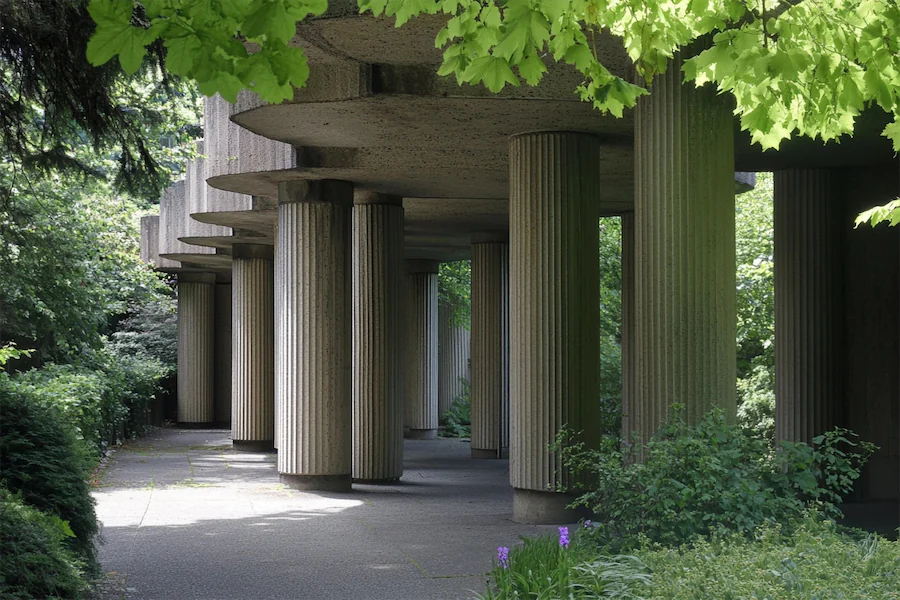Brutalist columns are a defining feature of Brutalist architecture, a movement that emerged in the 1950s and gained prominence through the 1970s. Characterized by their raw, unadorned appearance, these columns emphasize structural honesty and material authenticity, often showcasing the rugged texture of unfinished concrete.
History and Origins of Brutalist Columns
The term “Brutalism” is derived from the French phrase “béton brut,” meaning “raw concrete.” This architectural style developed as a reaction against the lightness and ornamentation of earlier movements, focusing instead on the exposure of building materials and structural elements. Architects like Le Corbusier were instrumental in popularizing the use of raw concrete, as seen in his Unité d’Habitation (1952), which revealed the imprint of wooden concrete forms.
Key Features of Brutalist Columns
Brutalist columns exhibit several distinctive characteristics:
- Material Authenticity: Typically constructed from raw, unfinished concrete, these columns often display the texture of the wooden molds used during casting, highlighting the construction process.
- Monumental Scale: Often oversized and imposing, Brutalist columns contribute to the building’s formidable presence, reinforcing the style’s emphasis on strength and durability.
- Geometric Forms: Favoring simple, bold shapes, these columns align with the overall geometric aesthetic of Brutalist architecture, creating a cohesive visual language.
Applications of Brutalist Columns
Brutalist columns have been employed in various notable structures:
- Yale University’s Paul Rudolph Hall: Formerly known as the Yale Art and Architecture Building, this structure features giant textured-concrete columns flanking its narrow, off-center entryway, exemplifying the Brutalist approach to material and form.
- Boston Government Service Center: Designed by Paul Rudolph, this complex utilizes several-story-high columns that contain elevators, staircases, and bathrooms, integrating functionality within the structural elements.
Considerations When Choosing Brutalist Columns
When incorporating Brutalist columns into architectural designs, consider the following:
- Contextual Appropriateness: Ensure that the imposing nature of Brutalist columns complements the surrounding environment and aligns with the building’s purpose.
- Material Quality: Select high-quality concrete and employ skilled craftsmanship to achieve the desired texture and durability inherent to Brutalist design.
- Structural Functionality: Beyond aesthetic considerations, design columns to effectively support the building’s load, integrating structural efficiency with visual impact.
Conclusion
Brutalist columns are emblematic of a movement that values material honesty and structural expression. Their raw, monumental presence continues to influence contemporary architecture, offering lessons in the power of unadorned materials and the beauty of exposed structural elements.
